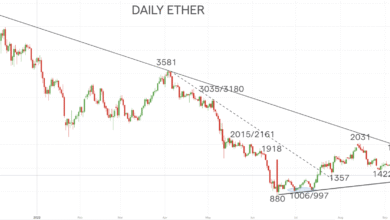Conflux Stablecoin: A Major Leap in Blockchain Finance

Conflux stablecoin has made a significant mark in the crypto landscape by officially launching an offshore yuan-backed digital currency during the Conflux 3.0 network upgrade in Shanghai. This innovative stablecoin is designed to be pegged 1:1 to the offshore Chinese yuan, providing a stable and reliable option for cross-border payments. With its introduction, Conflux aims to streamline financial interactions, especially for nations engaged in China’s ambitious Belt and Road Initiative. The partnership with fintech firm Anchorx further solidifies the stablecoin’s development, paving the way for enhanced financial accessibility and efficiency. As regulatory attitudes toward digital currencies in China adapt, the launch of the Conflux stablecoin positions itself at the forefront of this evolving landscape, coinciding with Hong Kong’s new stablecoin licensing regime.
The recent unveiling of a new digital currency backed by the offshore yuan marks a pivotal moment in the evolution of the Chinese blockchain space. This innovative financial tool, designed to support cross-border transactions, is a strategic move in alignment with the Belt and Road Initiative, helping countries engage more seamlessly with China’s economy. As the Conflux 3.0 upgrade enhances the network’s capabilities, it promises to deliver an unprecedented transaction speed that will significantly benefit users and investors alike. Collaborating with fintech partners, this new stablecoin aims to address the growing need for stability in international payments. With China’s regulatory landscape shifting, this stable financial instrument could play a crucial role in shaping the future of digital currencies in the region.
Introduction to Conflux and Stablecoins
Conflux is positioning itself as a leader in the Chinese blockchain landscape with its innovative solutions tailored for the digital currency sector. One of the most significant announcements from Conflux is the launch of their offshore yuan-backed stablecoin. This development comes as part of the Conflux 3.0 network upgrade, which enhances the capabilities of the platform to support advanced financial solutions. As blockchain technology continues to reshape cross-border payments, Conflux is at the forefront, providing a stable solution that aims to bridge international trade gaps.
The offshore yuan-backed stablecoin is pegged to the Chinese yuan at a 1:1 ratio, providing stability for users navigating the often-volatile crypto market. This new financial instrument aims to facilitate seamless cross-border transactions, particularly benefiting countries that are part of China’s Belt and Road Initiative. Through this initiative, stakeholders are likely to witness an increased volume of international trade, supported by the reliability of the stablecoin that can simplify payment processes.
The Impact of the Conflux 3.0 Upgrade
The Conflux 3.0 upgrade represents a transformative leap for the platform, boasting an impressive transaction processing capacity of over 15,000 transactions per second. This performance enhancement is crucial for the effective functioning of the new offshore yuan-backed stablecoin, as it allows for rapid and efficient transactions—essential for businesses engaged in cross-border payments. Furthermore, this upgrade integrates advanced features such as on-chain artificial intelligence agent calls, which could revolutionize how smart contracts are executed within the blockchain.
As the demand for more efficient blockchain solutions grows, particularly in the context of international trade facilitated via the Belt and Road Initiative, the Conflux 3.0 upgrade will likely attract increased user engagement. This placement of Conflux within a broader ecosystem of blockchain technology enhances its offer to users by providing unprecedented scalability and usability, especially for businesses looking to streamline their operations through digital currencies.
Facilitating Cross-Border Payments with the Offshore Yuan Stablecoin
The launch of the offshore yuan-backed stablecoin is set to transform cross-border payments, especially for enterprises participating in the Belt and Road Initiative. This stablecoin addresses many of the common challenges involved in international transactions, such as currency fluctuations and high fees. By utilizing a stablecoin pegged to the offshore yuan, businesses can secure stable conversions and leverage faster settlement times, creating a more reliable payment infrastructure for global commerce.
Additionally, this initiative reflects a broader trend towards the adoption of digital currencies amidst evolving regulatory frameworks in China. As fintech firms like Anchorx collaborate with Conflux, the infrastructure supporting stablecoin transactions will strengthen, enabling more businesses to adopt digital payment solutions confidently. The implications of this shift could lead to a significant increase in market participation, elevating China’s influence on the global financial stage.
Regulatory Landscape for Stablecoins in China
As stablecoins gain traction within the Chinese financial ecosystem, understanding the regulatory landscape is critical. The recent changes in regulatory attitudes towards digital currencies, particularly with the licensing regime introduced in Hong Kong, signal a shift towards a more supportive environment for innovations like the offshore yuan stablecoin. This evolution in regulations enhances the legitimacy of digital currencies and fosters a framework within which entities like Conflux can operate.
The regulatory focus will likely ensure consumer protection while also encouraging innovation in blockchain technology. As the ecosystem adapts to these changes, it may attract foreign investments in Chinese blockchain projects, further establishing China as a hub for blockchain development. The emphasis on compliance among stakeholders will enhance the trust factor associated with the cross-border payment solutions offered through the Conflux platform.
Technological Advancements with Stablecoin Development
The introduction of the offshore yuan-backed stablecoin is accompanied by substantial technological advancements facilitated by the Conflux 3.0 upgrade. These advancements not only improve scalability but also increase security and transaction speed, critical factors for users engaging in cross-border payments. The integration of cutting-edge technology allows users to benefit from real-time processing and lower transaction costs, making digital currency transactions more attractive.
Moreover, by incorporating on-chain artificial intelligence capabilities, Conflux enhances the usability of its platform, allowing for smarter, more efficient transaction executions. This technology can facilitate programmatic trading, automated compliance features, and personalized user experiences, ultimately driving higher adoption rates among businesses in international markets that rely on blockchain solutions for their operations.
The Role of Anchorx in Supporting Digital Currency Innovation
Anchorx, as a partnering fintech firm, plays a pivotal role in the development and implementation of Conflux’s offshore yuan-backed stablecoin. Their expertise in fintech solutions complements Conflux’s blockchain capabilities, fostering an environment conducive to innovation and user-centric applications. By supporting the stablecoin’s infrastructure, Anchorx enhances the reliability and access to Chinese digital currencies, broadening the potential user base significantly.
The partnership signifies a strategic alliance in the fintech landscape of China, where both parties can leverage their strengths to drive advancements in payments technology. As the stablecoin evolves, Anchorx’s role will be crucial in ensuring that the integration of traditional financial systems with blockchain solutions remains seamless, promoting wider acceptance and trust among businesses and consumers engaging with Conflux’s offerings.
Market Reactions to the Offshore Yuan Stablecoin
The launch of the offshore yuan-backed stablecoin has garnered significant attention within the financial markets, prompting various reactions from investors and industry analysts alike. Many view this development as a potential game-changer for cross-border payments given China’s growing influence in the global economy. The immediate implications could lead to increased demand for digital currency solutions, hence driving up interest in blockchain-based transactions.
Furthermore, the market may respond positively as businesses begin to adopt the stablecoin to navigate the complexities of international air markets and dollar reliance. Analysts expect this trend may accelerate further as more countries engage with China’s Belt and Road Initiative, ultimately fostering a climate where stablecoins play an integral role in shaping the future of cross-border commerce.
Future Prospects for Conflux and Stablecoins
Looking ahead, the prospects for Conflux and its offshore yuan-backed stablecoin appear promising. With the convergence of blockchain technology and evolving regulatory environments, Conflux is uniquely positioned to leverage its technological advancements to dominate the digital currency market within China and beyond. The enhancements from the Conflux 3.0 upgrade will enable the platform to adapt and grow alongside the rapidly changing landscape, making it a formidable player in digital finance.
As the global appetite for stablecoins continues to rise, Conflux’s engagement in the international stage through its partnership with fintech firms reinforces its commitment to innovation in blockchain technology. This proactive stance, combined with an active interest in cross-border payment solutions, could position Conflux as a leader in the field, particularly for businesses looking to capitalize on the Belt and Road Initiative and beyond.
Final Thoughts on Conflux and the Digital Currency Revolution
The evolution of Conflux and its newly launched offshore yuan-backed stablecoin marks a significant milestone in the adoption of digital currencies in China. This initiative aligns with the growing global trend of integrating blockchain technology with traditional financial systems, providing innovative solutions to longstanding transactional challenges. As regulatory frameworks evolve to accommodate these advancements, the path is set for a broader acceptance of cryptocurrencies as legitimate financial instruments.
The increasing collaboration between blockchain platforms like Conflux and fintech partners underscores the transformative potential of digital currencies. As they facilitate easier cross-border payments and enhance access to global markets, we may witness a paradigm shift in international trade dynamics, making it imperative for stakeholders to adapt quickly in order to benefit from this digital currency revolution.
Frequently Asked Questions
What is the Conflux stablecoin and how is it related to the offshore yuan?
The Conflux stablecoin is a new digital currency launched on the Conflux blockchain, pegged 1:1 to the offshore Chinese yuan (CNH). This stablecoin aims to streamline cross-border payments and enhance financial transactions between countries participating in the Belt and Road Initiative.
How does the Conflux 3.0 upgrade impact the functionality of the Conflux stablecoin?
The Conflux 3.0 upgrade significantly increases transaction processing capacity to over 15,000 transactions per second, which enhances the overall efficiency of the Conflux stablecoin for cross-border payments, making it a reliable choice for users in the global market.
What role does the Conflux stablecoin play in China’s Belt and Road Initiative?
The Conflux stablecoin facilitates cross-border payments across countries involved in the Belt and Road Initiative, promoting trade and investment by providing a stable digital currency option that aligns with the needs of international partners.
How does the partnership between Conflux and Anchorx support the stablecoin’s development?
The partnership with fintech firm Anchorx is pivotal for the development of the Conflux stablecoin, as it combines financial expertise and blockchain technology to ensure the stablecoin meets regulatory standards and operational efficiency for users engaged in cross-border transactions.
What are the implications of Hong Kong’s new licensing regime for the Conflux stablecoin?
Hong Kong’s new licensing regime for stablecoin issuers creates a supportive regulatory environment for the Conflux stablecoin, encouraging its adoption for cross-border payments and enhancing trust among users and investors in the Chinese blockchain ecosystem.
Why is there a growing interest in stablecoins within China?
The growing interest in stablecoins within China is driven by evolving regulatory attitudes towards digital currencies and initiatives like the Conflux stablecoin, which aim to facilitate cross-border payments and integrate with the global financial system.
| Key Points | Details |
|---|---|
| Launch of Conflux Stablecoin | Conflux has launched an offshore yuan-backed stablecoin during its Conflux 3.0 network upgrade event in Shanghai. |
| Pegged Currency | The stablecoin is pegged 1:1 to the offshore Chinese yuan. |
| Cross-Border Payments | Designed for facilitating cross-border payments, especially for countries in China’s Belt and Road Initiative. |
| Partnership | Conflux collaborated with fintech firm Anchorx to develop the stablecoin. |
| Network Enhancements | Conflux 3.0 upgrade enhances transaction speed to over 15,000 transactions per second and includes features for on-chain AI agent calls. |
| Regulatory Context | The launch reflects increasing interest in stablecoins in China, aligned with the new licensing regime for stablecoin issuers in Hong Kong. |
Summary
Conflux stablecoin represents a significant step in the evolution of digital currencies in China. The launch of this offshore yuan-backed stablecoin emphasizes Conflux’s role in innovative blockchain solutions aimed at enhancing cross-border financial transactions. With strong support and a growing regulatory framework, the Conflux stablecoin is set to play a pivotal role in the future of digital finance in China.




